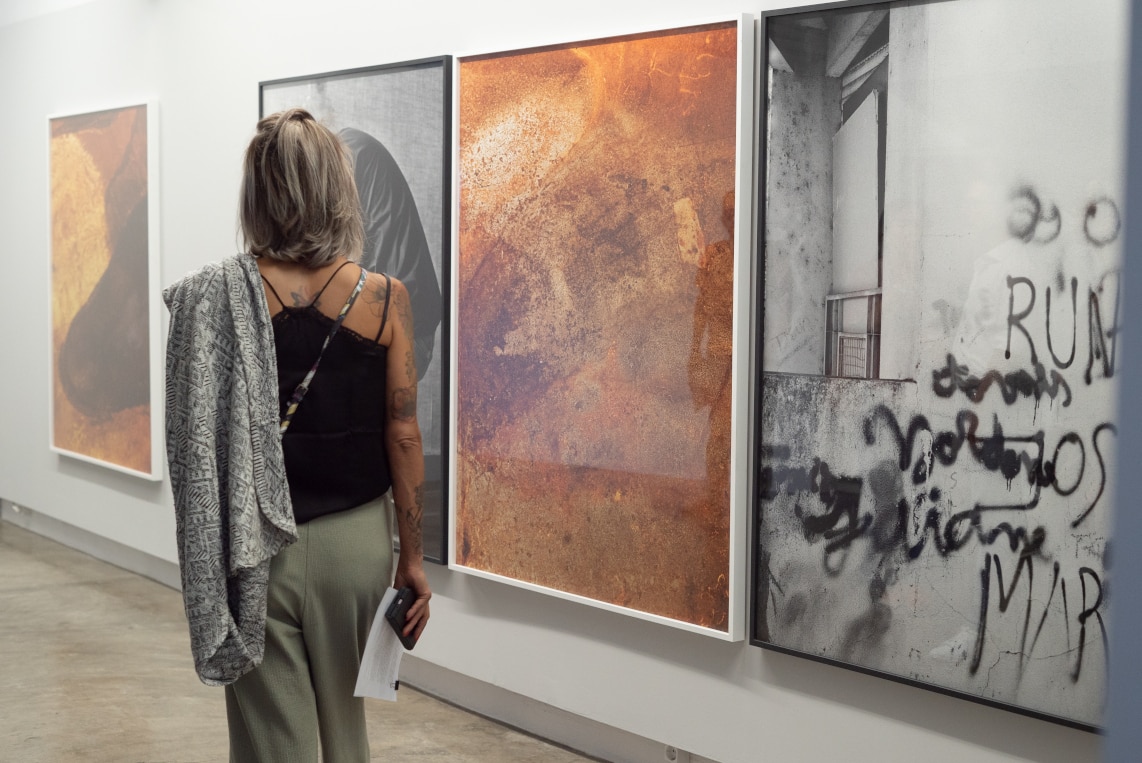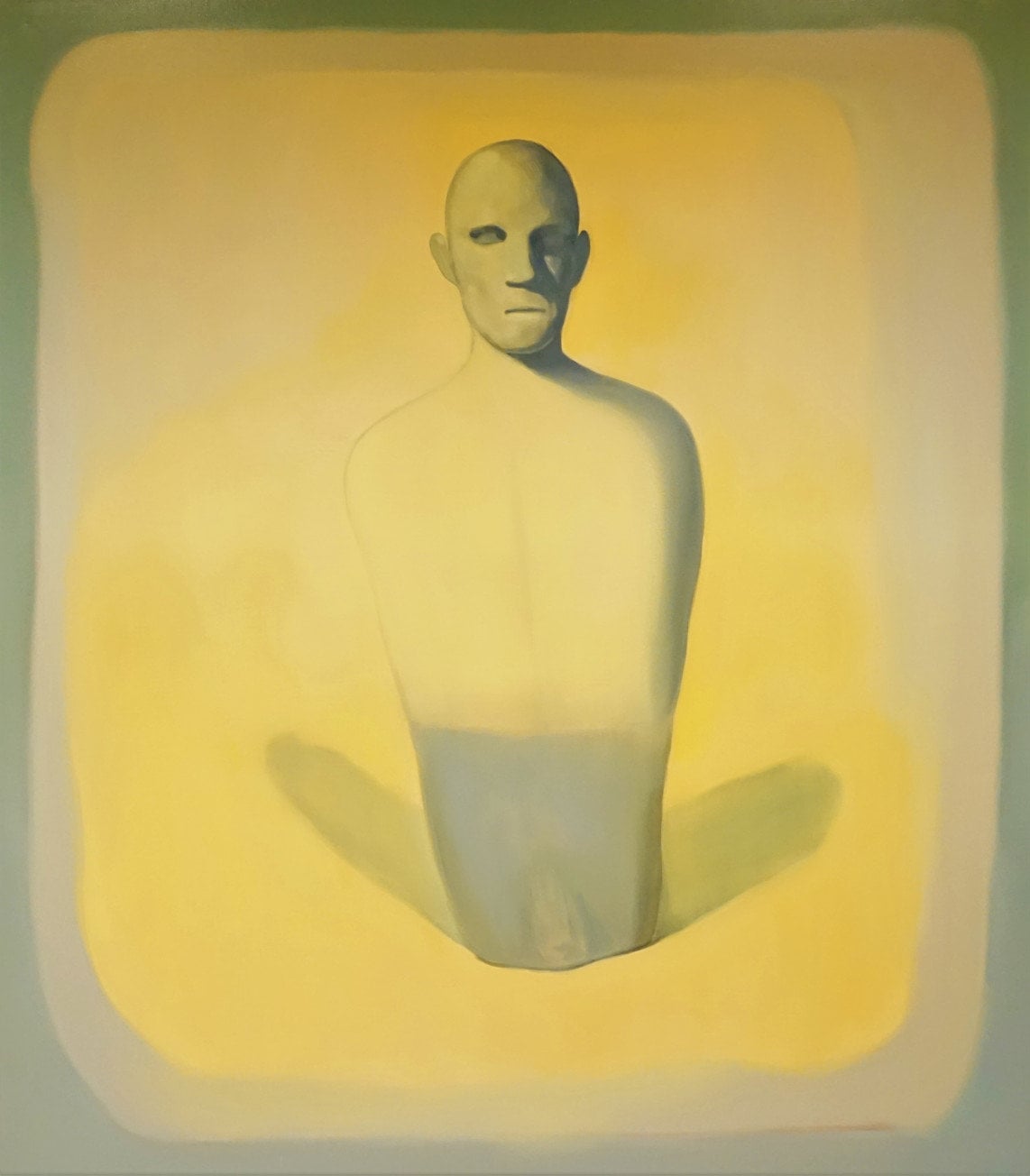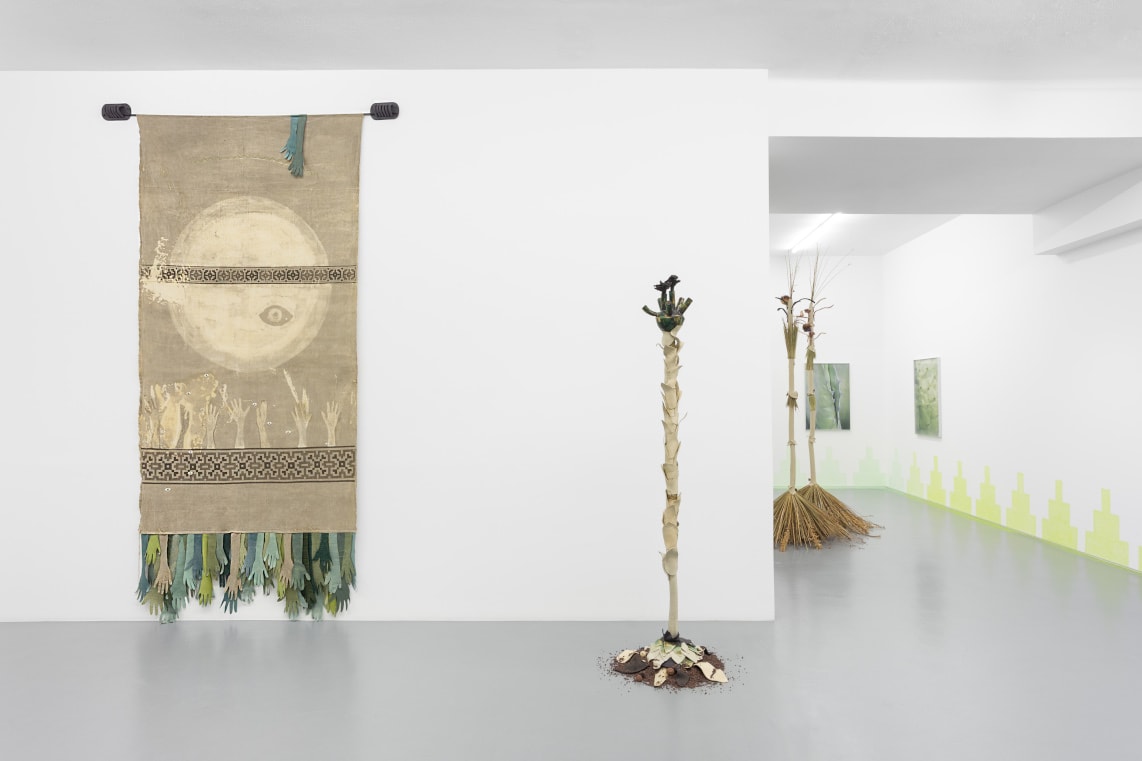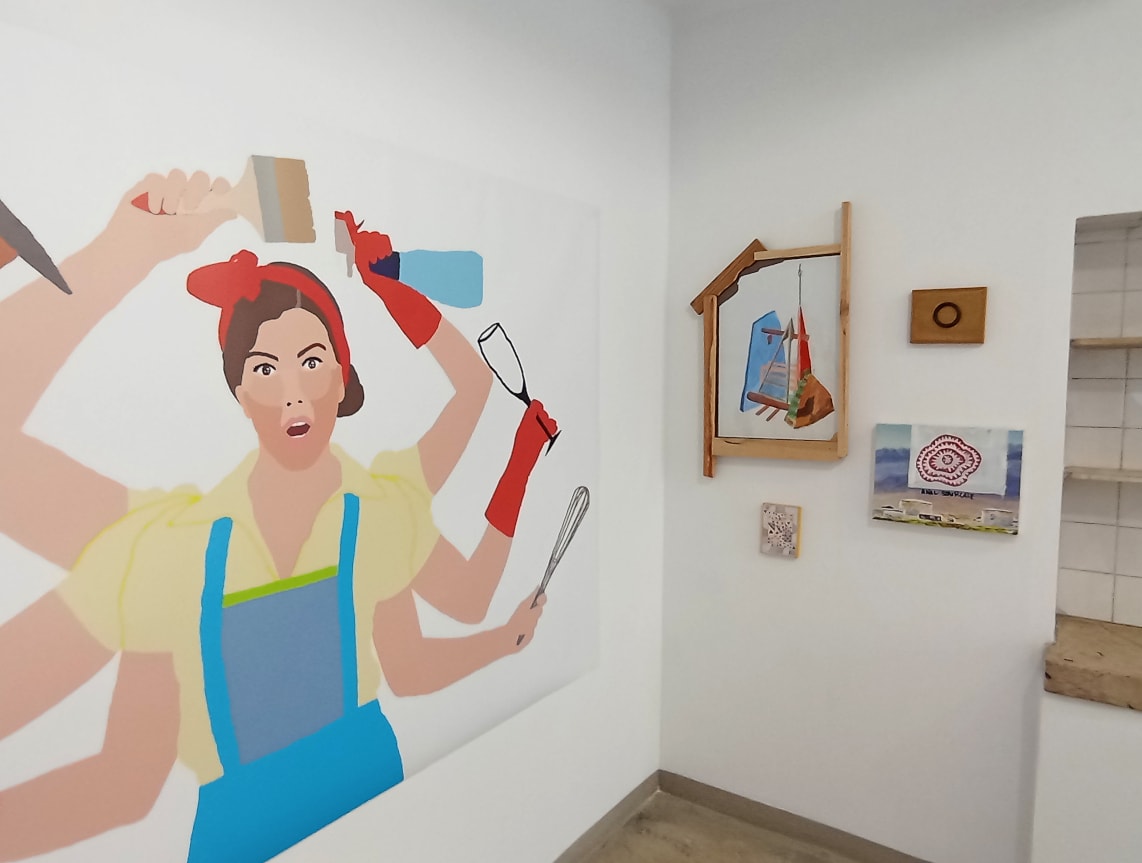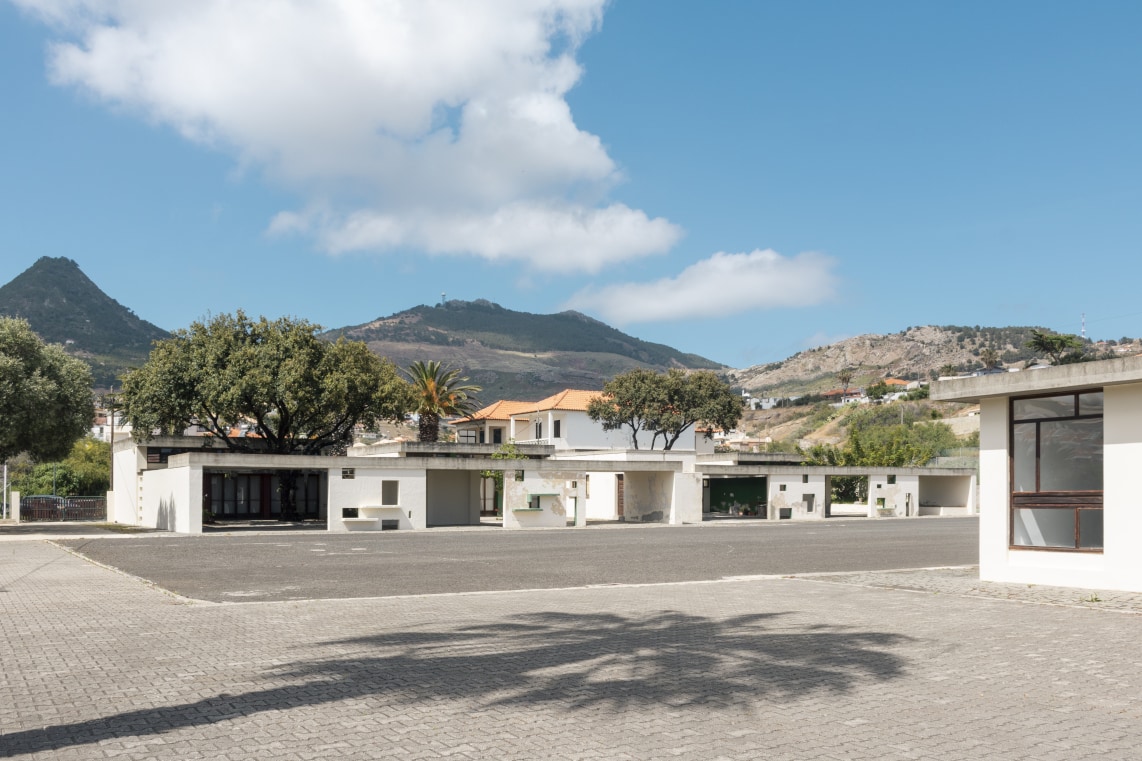The most recent temporary exhibition at Brotéria responds to an interesting challenge: how to make an exhibition about a musician? What was, now becomes does not present Ruy Coelho’s efforts, but recontextualizations of his work and life through the eyes of contemporary artists. More or less literal in its methods, the show has its own poetic, abstract logic, which goes beyond a tribute.
We begin with 2011 draw_03 by Tomaz Hipólito, a square drawn in black pen on a sheet of paper. The crease, which reveals a previous fold, makes it rise from the ground like a breath. It is one of the few works that does not have a text dialoguing with Coelho – the simplicity seems to show only a vibration in the music felt, in the visual imagined to be announced. Sentinel by Rodrigo Amado also takes the square, but angular, three-dimensional form of the photograph of the curve of a rough, textured wall. The text tells of an episode in Coelho’s life, where an opera of his, on the verge of ruin for lack of funds, was saved by a certain Dr. Amado. The unexpected dialogue seems to take the author’s name rather than the concept of the work, allowing our imagination to dream – there is no fear of taking risks.
Throughout the room – and, as we will realise later, throughout the building – we see plants, flowers drawn on the thin canvas surface apparently camouflaged on the walls, and bees searching for them, somehow distant. The gallery becomes the countryside. Ethereal, naturalistic, yet shifting, this is Inês Wijnhorst’s Bouquet – after all, the music is committed to take us somewhere else. These are delicate string compositions that flutter sentimentally. Their origin lies in an adjacent room, in Francisca Aires Mateus’ installation entitled Melodia do Amor. This is a modern and brutal speaker that sends out vibrations. We also see two parallel screens, a country setting, where two static women stand one on each screen. Both are oblivious to the music played on the headphones we are given, where weakness is sung. Francisca also exhibits LN in the main room, the last textless work, where parallel lines look like a staff or road: strings, chords. The section ends with Event > Add Title > Add people > Save by Blanca Bercial, a strange, rhythmic audiovisual work, where someone writes WIP (acronym for work in progress) on a typewriter. The typewriter is obscured by black rectangles intended to prevent reading, distracted by the sound that does not follow the movement of the hands. This work is an attempt to mirror the liberation that Coelho experienced with Santa-Rita Pintor, one day in Paris, when they tried to live in total freedom, eating when they were hungry, sleeping when they were sleepy. It was a long process, with no end in sight. We highlight a sentence that brings the exhibition together, narrated by the conceptions of Santa-Rita Pintor: “if music had colours, I could not accept that painting had no sounds”.
Leaving the gallery, walking through the bookshop at the entrance, we find the building’s opposite side where there is another work by Tomaz Hipólito: several real and sculptural squares, emitting LEDs, but suffocated by small, black PVC tubes. It’s obfuscation and revelation, the first opera Coelho saw clandestinely at the age of 15, without money, sneaking through the artists’ door at Teatro São Carlos.
Most of the work/text connections have subjective, open but divergent interpretations. They fit into Coelho’s heterogeneity and the contrasts between aesthetics almost reach the apparent contradictions of the person (at least, in today’s perspective), but fail to do so. Since this is a tribute, it would not make sense to complexify Coelho, to mention his conservative and nationalist ideals, in an exhibition that wants to be a positive tribute. The works are overpowered by the image of a determined and avant-garde man at heart, whom we want to remember – the exhibition is about the man and not the work.
This shift in the works, a reflection of Coelho’s rupture, is surprisingly broken into pieces when we enter the building’s café to see De zero a três mesadas em Berlim by Fernando Martins. First, we see a work that uses the title of the accompanying text. It obeys the story told, like a poster of a film transformed into text. We are reminded that text is also an artwork in this exhibition. The aim is to enter the era portrayed, with the formality of a modernist poster, mathematical, premeditated, cartoonish, the glimpse of an old circus or a Cinemascope production. It shows us that we haven’t seen everything yet.
And, yes, there is the last floor where the dream intensifies and is materialized (perhaps Coelho’s life, in overcoming circumstances, has also been a dream). We are as close as possible to Palácio dos Marqueses de Tomar, to the clouds. We see Mónica Coelho’s Domingo, Segunda, Terça, Quarta, Sol, Sexta, Sábado, translucent paintings on acetate, attempting to understand the musician’s sleepless nights waiting to go to Conservatório de Lisboa. There is coloured, morning light, pierced through the window, where images cluster like hypnagogic elements – music scores, piano, numbers, lines, galaxies. We also see watercolour figurations by Pedro Proença, Sem Título, between the surreal and the vegetalist, as if they were translations of imaginaries. Like Bouquet by Inês Wijnhorst, they attempt to camouflage themselves on the walls, dialoguing with the profuse ceilings of the room (by being high up, the works have us on a secondary plane, as we look at them). And setting up a mise-en-scène, reminiscent of the stage design of the Princess of Iron Shoes ballet, mentioned in the text.
Having concluded the exposition, we notice that we have not heard Coelho’s work. The bees look for the flower, waiting for an answer. It is in the very first room, at the entrance, on the right-hand side – red poppy, glitteringly elusive. Perhaps it tells us that, despite this immediacy, a revelation slyly emerging in the first few moments, Coelho’s presence never faded. Perhaps silence, dialectically, has been his entry space, an essential condition for concretisation. After all, it is no longer he who speaks: the work lives on, reborn in another context, – perhaps the best one to understand it. He will no longer strike a chord. We have seen a bridge between generations, what is left of the past now firmer, intensified by time: what was now becomes.
What was, now becomes is at Brotéria until September 3.
